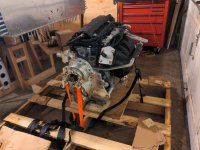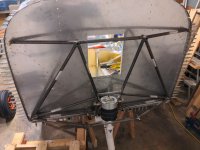For anyone interested in following along, I'm working on my 9A in which I'll be installing a Honda 1.8L (aka Viking 150) with their "VIP" electric variable propeller and gearbox packages.
I'll say up front that I'm not retired and don't have a huge amount of spare time so who knows when this thing will fly, but building is half the fun of course.
Here's the block as-delivered with the gearbox and prop pitch actuator attached.

I went ahead and had Viking design a mount that incorporated the "new" elastomer gear leg and this is what they came up with. After reading through the mega-thread by @charosenz, I'd love any comments people have on it structurally. The tubing is 0.625" x 0.065" wall. (If anyone needs a stock Dynafocal I mount PM me...)

I'll say up front that I'm not retired and don't have a huge amount of spare time so who knows when this thing will fly, but building is half the fun of course.
Here's the block as-delivered with the gearbox and prop pitch actuator attached.

I went ahead and had Viking design a mount that incorporated the "new" elastomer gear leg and this is what they came up with. After reading through the mega-thread by @charosenz, I'd love any comments people have on it structurally. The tubing is 0.625" x 0.065" wall. (If anyone needs a stock Dynafocal I mount PM me...)












